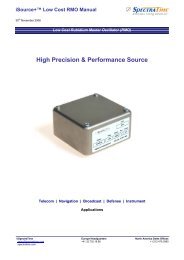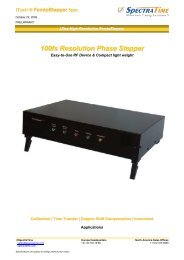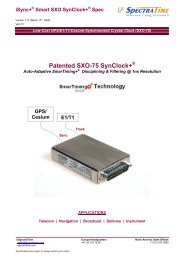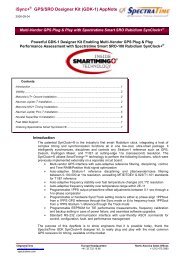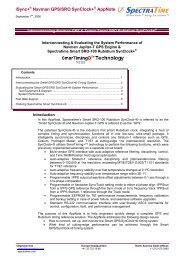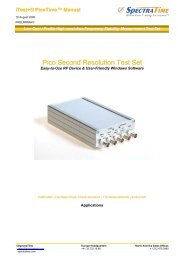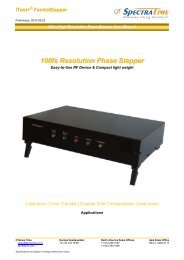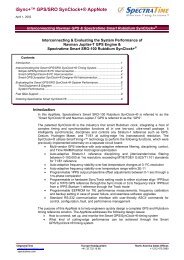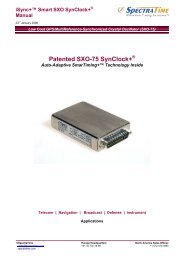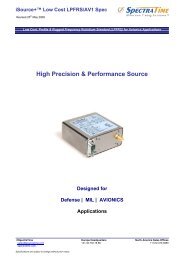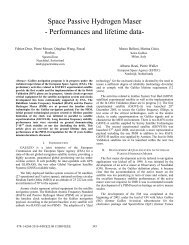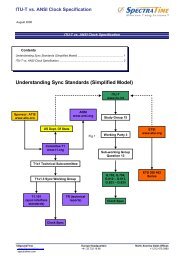iSource+⢠Low Cost HPFRS Manual - Spectratime
iSource+⢠Low Cost HPFRS Manual - Spectratime
iSource+⢠Low Cost HPFRS Manual - Spectratime
Create successful ePaper yourself
Turn your PDF publications into a flip-book with our unique Google optimized e-Paper software.
iSource+ <strong>Low</strong> <strong>Cost</strong> <strong>HPFRS</strong> <strong>Manual</strong>Fig. 2-3: Dip minimum detectionThe 5.316... MHz phase modulation is introduced at the 180 MHz level. The 5.316... MHz spectrum is thusreproduced as a sideband of the 6840 MHz signal multiplied from the 20 MHz VCXO. The difference of the twofrequencies corresponds to the Rb clock frequency.This 5.316... MHz is generated by a synthesizer which is frequency modulated at the rate of fm for dipdetection.The center frequency of the synthesizer is adjustable with step sizes of 12mHz in order to have the capability toadjust the <strong>HPFRS</strong> output frequency (10 MHz ) with a resolution of 2× 10 -10 per step and, also, to compensatethe frequency shift due to the buffer gas pressure inaccuracies in the cell.The Rb light is generated by a plasma discharge in the Rb lamp. This is sustained by an RF oscillator whichdrives a coil surrounding the Rb lamp bulb. In addition, the lamp is heated to 140°C and stabilized within 0.2°Cover the full operating temperature range. The temperature controlled heating power is generated by a woundresistive heater wire. Another part of the heating power is generated by the RF oscillator.The Rb absorption cell is heated to ~85°C and also stabilized within 0.3°C over the full operating temperaturerange. The heating by a heater wire and the temperature control follows the same pattern as for the lampheater.©SpectraTime Europe Headquarters North America Sales Offices Page 6 of 13sales@spectratime.com +41.32.732.16.66 +1.512.470.3980spectratime.com



